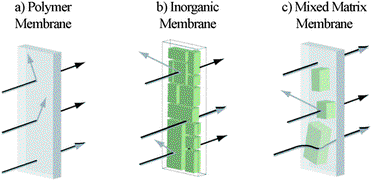Feasibility of zeolitic imidazolate framework membranes for clean energy applications
Jan 1, 2012·
,
,
 ,
,
·
0 min read
,
,
·
0 min read
A. W. Thornton
D. Dubbeldam
M. S. Liu
Prof. Dr. Bradley P. Ladewig
A. J. Hill
M. R. Hill

Abstract
Gas separation technologies for carbon-free hydrogen and clean gaseous fuel production must efficiently perform the following separations: (1) H2/CO2 (and H2/N2) for pre-combustion coal gasification, (2) CO2/N2 for post-combustion of coal, (3) CO2/CH4 for natural gas sweetening and biofuel purification, and (4) O2/N2 for oxy-combustion of coal. By utilizing a molecular simulation approach, Monte Carlo procedures, free volume analysis, and continuum modeling, we predict the intrinsic gas permeability and separation properties of several new Zeolitic Imidazolate Frameworks (ZIFs), a family of the Metal–Organic Frameworks (MOFs). The well defined pore sizes in conjunction with high surface areas make ZIFs prime candidates for molecular sieving. In this work, our calculated intrinsic properties are compared with current experimental results where ZIFs are either grown in dense layers to form pure inorganic membranes on porous supports or dispersed within a polymer phase to form mixed matrix membranes. Consequently, this paper assesses current membrane development according to industrial feasibility targets and highlights the achievable superior separation results for ideal membrane configurations. For example, ZIF-11 is discovered to be capable of sieving H2 from all of its larger gas counterparts at a remarkable H2/CO2 selectivity of 262 and H2 permeability of 5830 Barrer, well within the target area for efficient hydrogen production.
Type
Publication
Energy and Environmental Science